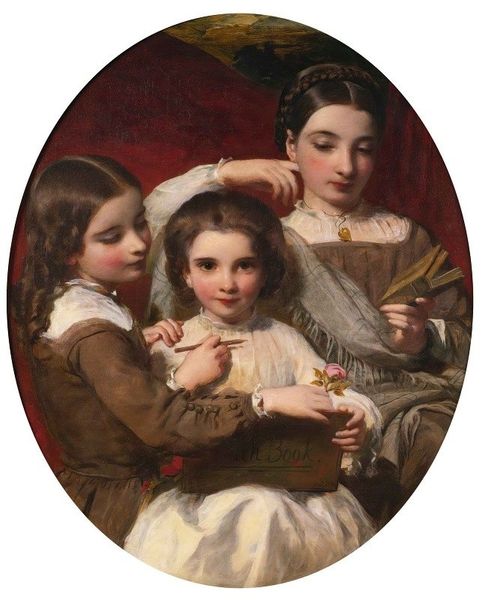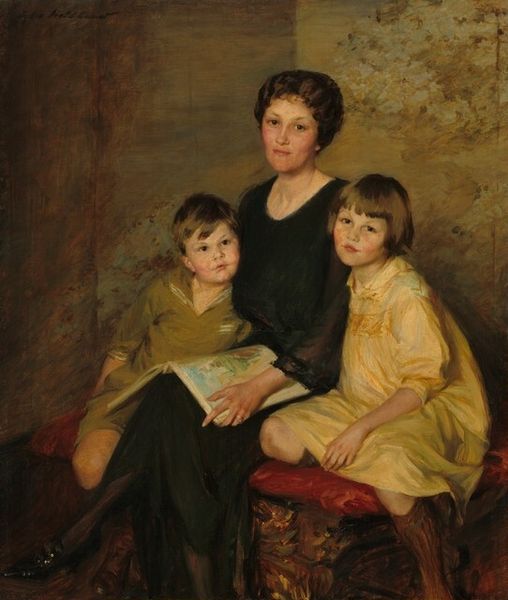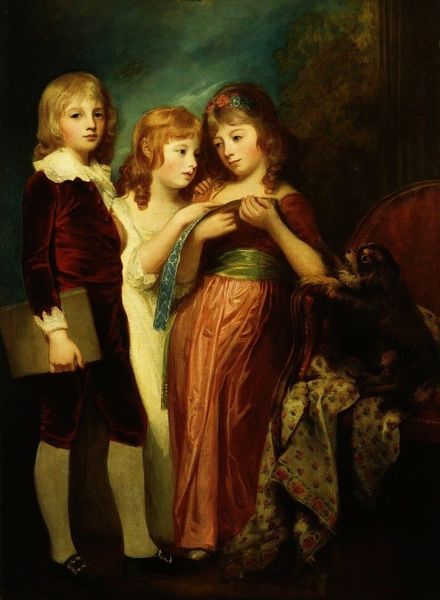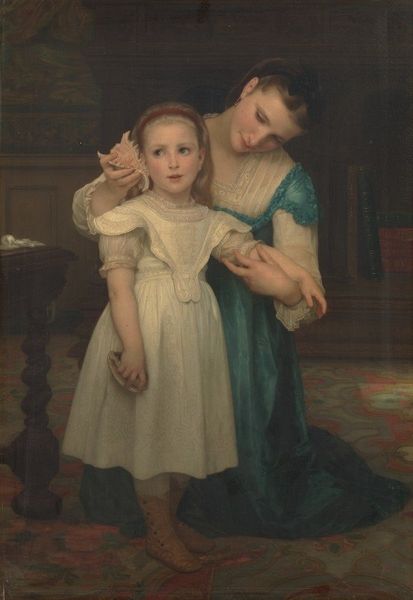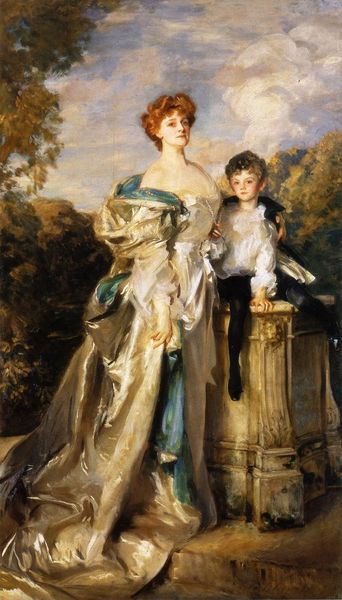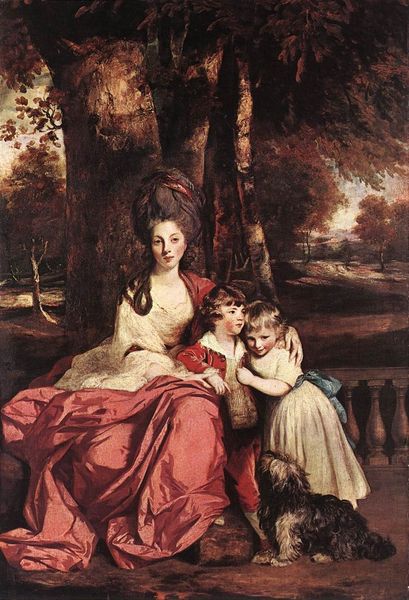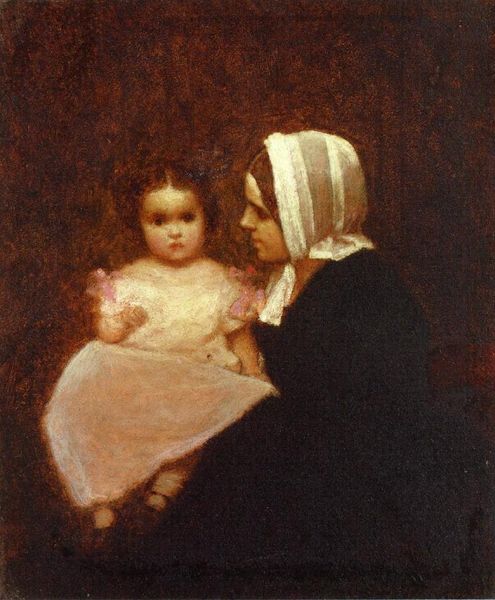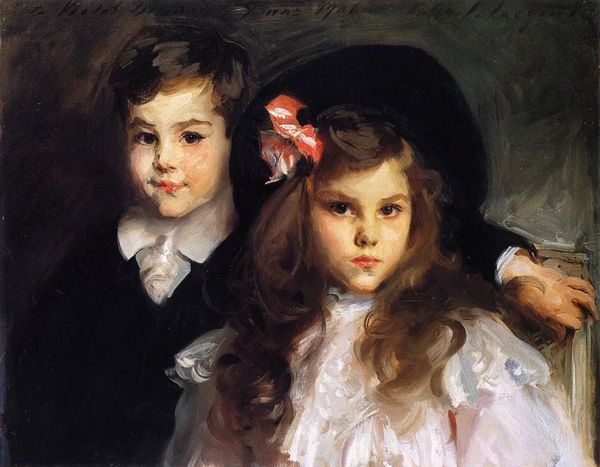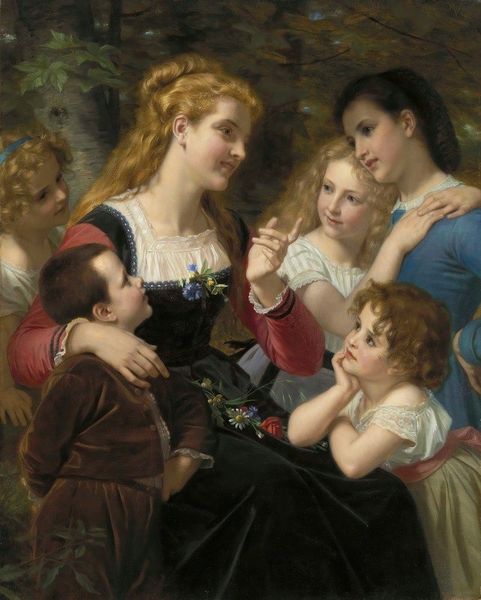
Copyright: Public Domain: Artvee
Editor: This oil on canvas from 1897 is called "Mother and Children" by Carolus-Duran. The mood feels very posed, very deliberate, like we’re seeing a presentation of idealized motherhood and childhood. What’s your read on this? Curator: You’ve touched on something key. Think about the era, the late 19th century, where portraiture, particularly of women and families, functioned as a declaration of social standing. How does Carolus-Duran employ academic art styles to both affirm and perhaps subtly challenge conventional expectations of women's roles during that time? Editor: Well, she’s definitely the central figure, beautifully painted. Her clothing and posture convey a certain elegance, yet there's a kind of somberness in her eyes. Does that suggest anything about her position or societal constraints? Curator: Precisely. This melancholic air can be interpreted in many ways. On the one hand, the rosy appearance adheres to expectations and displays affluence through carefully chosen materials; it underscores the maternal role valued by society, yet this might obscure how bourgeois, social structures constrained women's freedom to express themselves in the late nineteenth century. The rose she wears adds to that possible symbolic layer of passion in full bloom versus fading expectations. Editor: It is quite the contrast – this striking woman presented in such finery alongside these symbols of familial love. Thank you. Curator: I appreciate you sharing your perspective; viewing art this way makes for a more grounded conversation and perhaps unveils a better insight on the relationship of women in art, then and now.
Comments
No comments
Be the first to comment and join the conversation on the ultimate creative platform.

